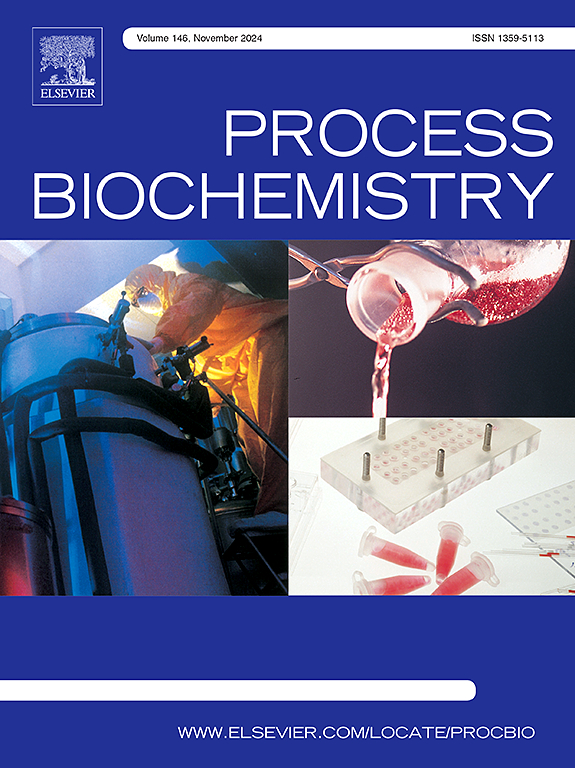Statistical optimization and kinetic modeling simulation for fibrinolytic enzyme production by Bacillus tropicus from mahewu, a traditional South African fermented food
IF 3.7
3区 生物学
Q2 BIOCHEMISTRY & MOLECULAR BIOLOGY
引用次数: 0
Abstract
Cardiovascular diseases are a leading cause of global mortality, with existing thrombolytic drugs having side effects, short half-life, and high costs, warranting alternatives. Since the discovery of nattokinase from Japanese natto, fibrinolytic enzymes from fermented foods have been explored as promising thrombolytic agents. However, most research has focused on Asian fermented foods, with limited studies on African sources. In this study, Bacillus tropicus DUT M1, an extracellular fibrinolytic enzyme producer, was isolated for the first time from mahewu, an indigenous fermented food. Optimization was performed using a combination of OFAT and RSM. Glucose and casein were the optimal carbon and nitrogen sources identified through OFAT, while casein, meat extract, and pH were significant in the Plackett-Burman design. CCD optimized the medium to 28.23 g/L casein, 6.41 g/L meat extract, and pH 7.90, increasing enzyme production 13.9-fold, 12 U/mL to 167 U/mL. Kinetic modeling validated S-Gompertz as the best fit (R² = 0.97) compared to Logistic-1, Richards, and S- Weibull- 2 models. Fibrinolytic activity was confirmed via quantitative tube assay, fibrin zymography, and blood clot lysis experiments. These findings establish mahewu as a novel source of fibrinolytic enzyme producers, highlighting the therapeutic and industrial potential of African fermented foods.
求助全文
约1分钟内获得全文
求助全文
来源期刊

Process Biochemistry
生物-工程:化工
CiteScore
8.30
自引率
4.50%
发文量
374
审稿时长
53 days
期刊介绍:
Process Biochemistry is an application-orientated research journal devoted to reporting advances with originality and novelty, in the science and technology of the processes involving bioactive molecules and living organisms. These processes concern the production of useful metabolites or materials, or the removal of toxic compounds using tools and methods of current biology and engineering. Its main areas of interest include novel bioprocesses and enabling technologies (such as nanobiotechnology, tissue engineering, directed evolution, metabolic engineering, systems biology, and synthetic biology) applicable in food (nutraceutical), healthcare (medical, pharmaceutical, cosmetic), energy (biofuels), environmental, and biorefinery industries and their underlying biological and engineering principles.
 求助内容:
求助内容: 应助结果提醒方式:
应助结果提醒方式:


